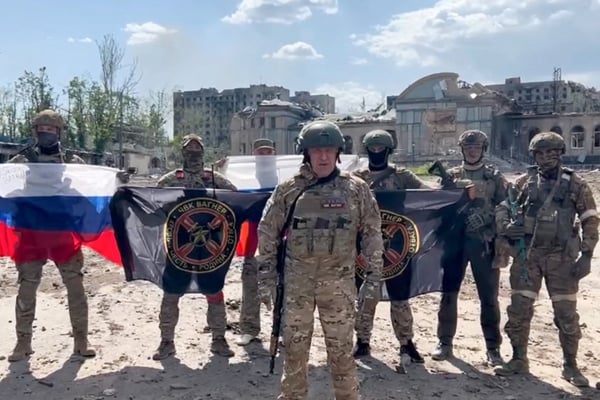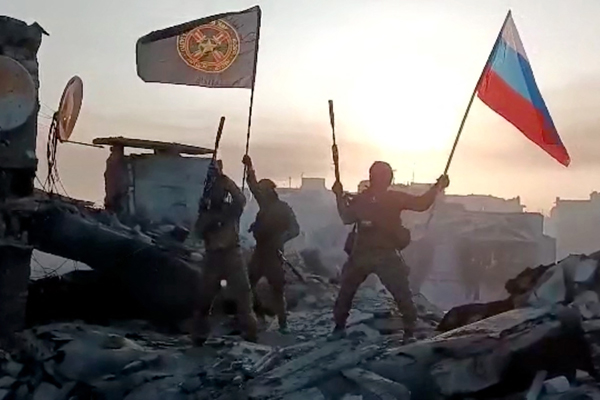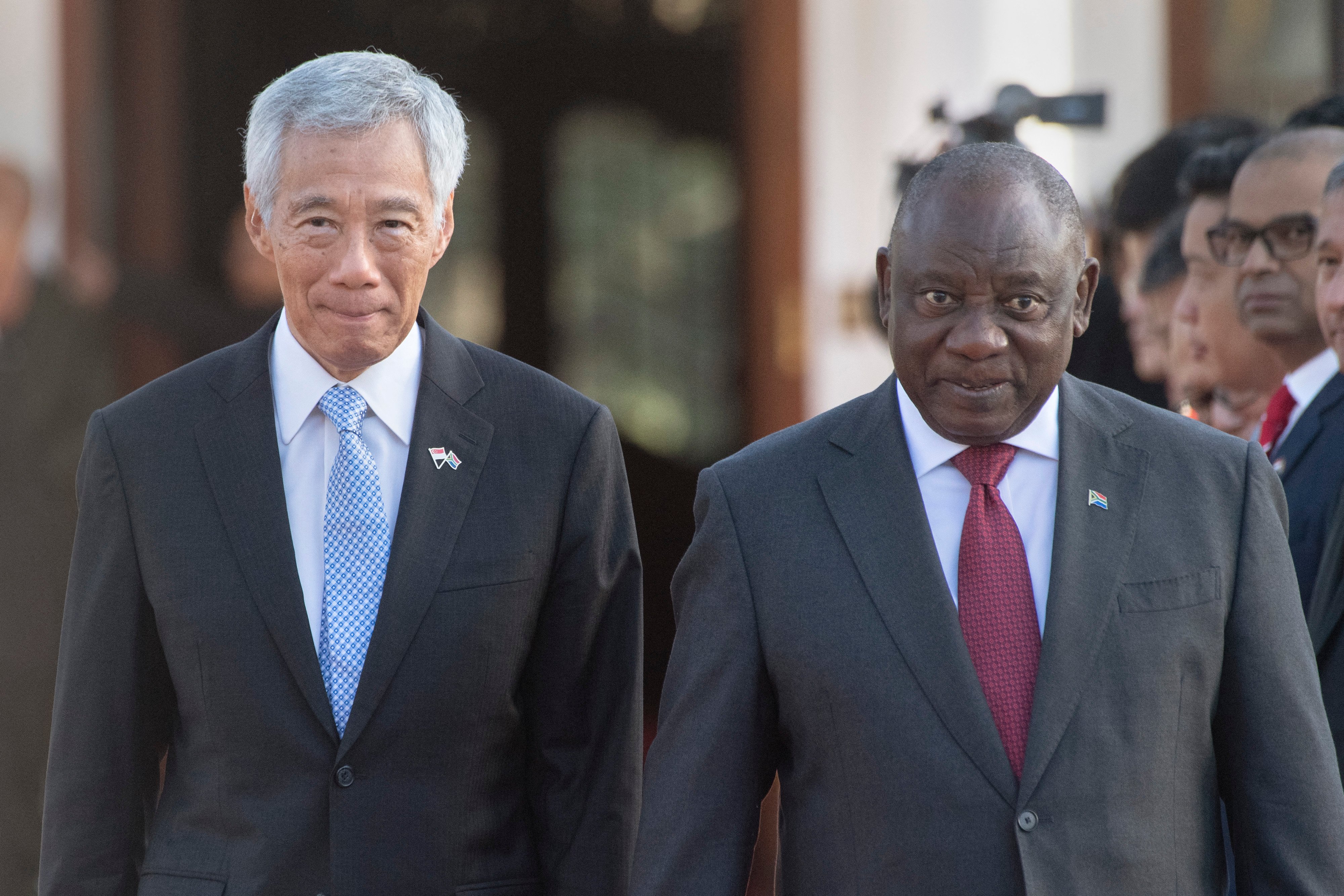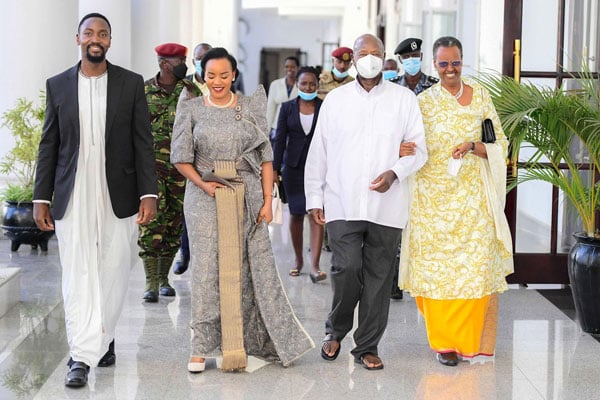The Ukraine war: Main developments

This video grab taken from a handout footage posted on May 20, 2023 on the Telegram account of the press service of Concord -- a company linked to the chief of Russian mercenary group Wagner, Yevgeny Prigozhin -- shows Yevgeny Prigozhin holding a Russian national flag in front of his soldiers holding Wagner Group's flags in Bakhmut, amid the Russian invasion of Ukraine. PHOTO/ AFP
What you need to know:
- A full-scale invasion begins, with missile strikes on several Ukrainian cities and ground forces entering the country from the north, south and east
Russian President Vladimir Putin launched the biggest attack on a European country since World War II when he ordered the invasion of Ukraine on February 24, 2022.
Since then some 150,000 people have been killed and wounded on both sides, according to Western estimates. Some eight million Ukrainians have also fled their homes.
Here is a timeline:
Full-scale invasion
At dawn on February 24, Putin announces a "special military operation" to demilitarise and "de-Nazify" the former Soviet country.
He says he is acting to protect two self-proclaimed pro-Russian territories in the eastern Ukraine Donbas region from "genocide", without substantiating his allegations.
A full-scale invasion begins, with missile strikes on several Ukrainian cities and ground forces entering the country from the north, south and east.
Ukrainian President Volodymyr Zelensky stays in Kyiv to lead the resistance. The United States warns that Russia is out to "decapitate" his government.
The invasion comes after frantic diplomatic efforts to dissuade Putin and causes an international outcry.
The West imposes unprecedented sanctions on Russia and progressively ramps them up.
The European Union agrees to send weapons to Ukraine -- a first for the bloc -- and Washington greenlights billions of dollars in military aid.
Russian forces make rapid gains on Ukraine's Black Sea coast, seizing the southern port of Kherson, close to the Russian-occupied Crimea peninsula, and the port of Berdyansk on the Sea of Azov.
They attempt to encircle Kyiv and heavily bombard Ukraine's second-largest city, Kharkiv, near the Russian border in the northeast.
Horror in Bucha
A month later, having failed to enter Kyiv, Russian troops withdraw from northern Ukraine to focus on the east and south.
As they retreat from Kyiv's western suburbs, they leave behind scenes of horror.
On April 2, AFP discovers the bodies of at least 20 civilians, some with their hands tied behind their backs, lying in a street in Bucha.
Over the following weeks, hundreds more bodies, many bearing signs of torture, are found in homes, cellars and shallow graves across the north.
Russia denies accusations of widespread war crimes.
Mariupol falls
On April 21, Russia claims to have taken the southeastern port city of Mariupol, which it has relentlessly bombarded and besieged since the start of the war.
Russia is thus aiming to link up rebel-held territory in the Donbas with the occupied Crimea peninsula to the south.
Around 2,000 Ukrainian fighters hold out for nearly a month in Mariupol's sprawling Azovstal steelworks. Kyiv orders them in May to surrender to save their lives.
According to Kyiv, 90 percent of Mariupol has been razed and at least 20,000 people killed.
Ukraine fights back
Over the summer, the United States and EU step up their supplies of heavy weapons to Kyiv, allowing it to stage a two-pronged fightback.
In the south, Ukrainian forces launch a major offensive to retake Kherson.
They follow up in early September with a lightning counter-offensive around Kharkiv, winning back hundreds of towns and villages.
Putin announces a call-up of some 300,000 reservists.
Days later he formally annexes four regions of Ukraine -- Donetsk, Lugansk, Kherson and Zaporizhzhia.
On November 9, Russia's forces suffer their greatest setback when they are forced to abandon Kherson.
During the autumn and winter, Russia targets Ukraine's energy infrastructure, with repeated barrages of missile and drone strikes, leaving millions without power and heat in freezing temperatures.
Battle for Bakhmut
In January 2023, Russian forces backed by the controversial Wagner mercenary group intensify their offensive on the Donetsk town of Bakhmut, launching the longest and bloodiest battle of the war.
They advance in the north and south of the city, seizing its eastern area, but without managing to surround it.
In March, Zelensky says the fall of Bakhmut would create an "open road" for Russian forces to other cities in eastern Ukraine.
As fighting intensifies around the city, AFP video journalist Arman Soldin is killed by rocket fire on May 9 in the nearby town of Chasiv Yar.
After months of house to house combat and gradual advances by both sides, Russia on May 20 says it has fully captured the city.
The Russian defence ministry announces "the liberation of the city of Artemovsk", using the Soviet-era name of Bakhmut.
Kyiv prepares offensive
The West delivers the heavy tanks demanded by Kyiv in late March and long range artillery. Ukraine announces on April 19 it has received the first US Patriot air defence systems.
In late April, Ukraine announces that preparations are underway to launch a counteroffensive with a view to liberating the some 20 percent of its territory occupied by Moscow, including Crimea.
In May, a spate of sabotage attacks and long-distance strikes behind Russian lines fuel speculation that the counter-offensive has begun.
But Zelensky tells the BBC in an interview on May 11 that Ukraine needs "a bit more time".





